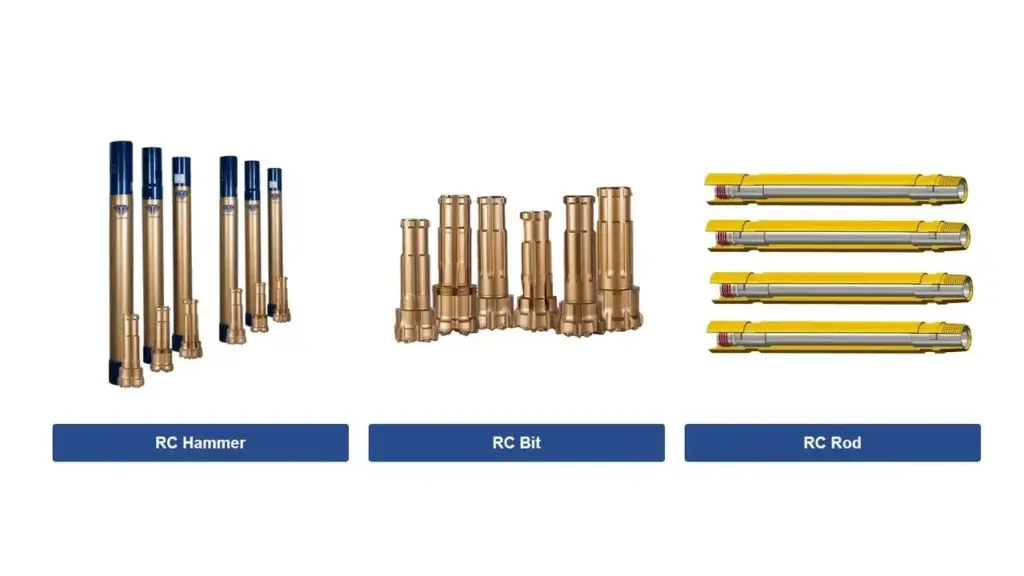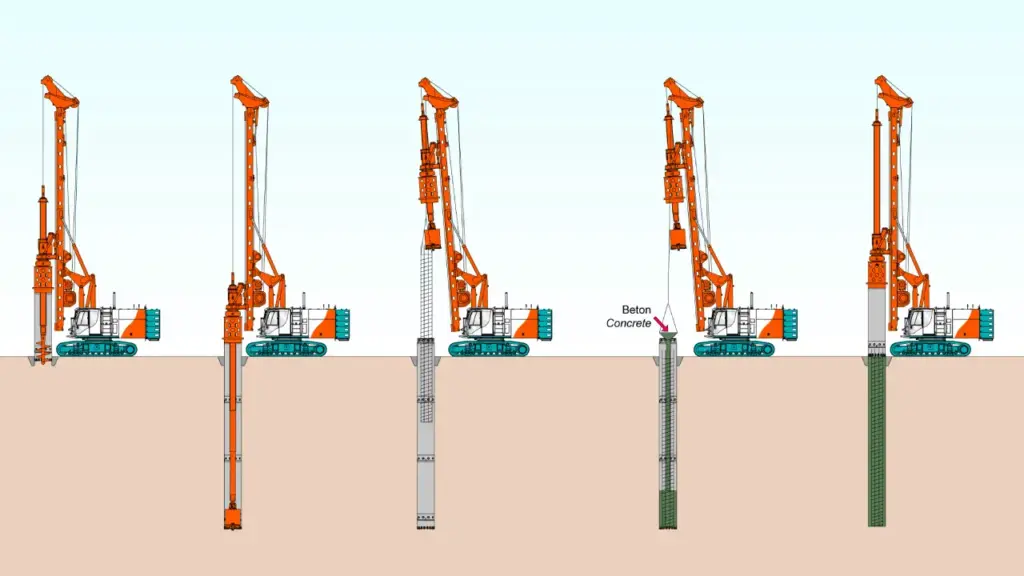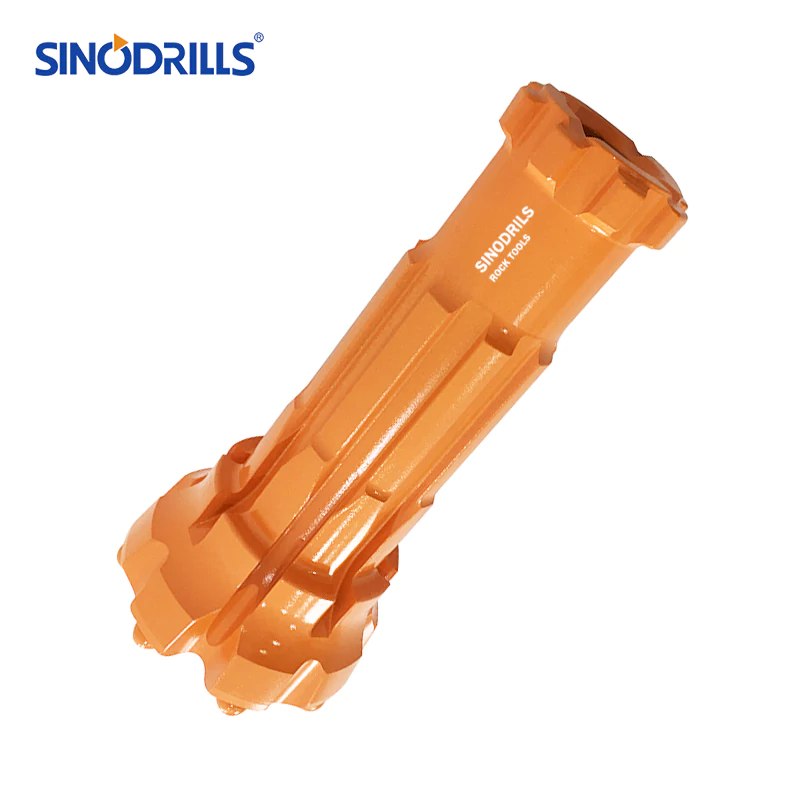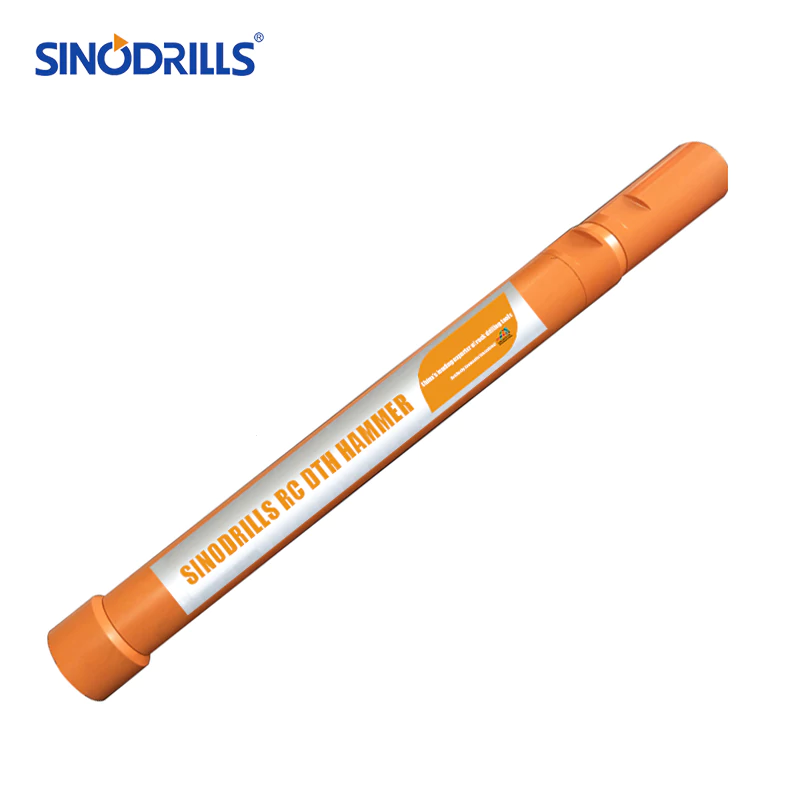Reverse Circulation (RC) drilling and Air Core (AC) drilling are two distinct methods used in mineral exploration. While both utilize compressed air to lift drill cuttings to the surface, key differences lie in their sample quality and drilling depth capabilities. Understanding these distinctions is crucial for selecting the appropriate technique for specific exploration objectives.
RC drilling yields larger, relatively dry, and uncontaminated samples, making it suitable for grade control and preliminary resource estimation. In contrast, AC drilling is faster and more cost-effective for shallow exploration, producing smaller, often dustier samples that may be more susceptible to contamination.
What is RC Drilling
Reverse Circulation (RC) drilling is a rapid and cost-effective method primarily used in mineral exploration. It employs a dual-walled drill pipe; compressed air is forced down the outer tube, and the resulting rock chips are pushed back up to the surface through the inner tube.
This RC drilling process delivers relatively large, dry, and uncontaminated samples at a fast rate, making it ideal for initial resource evaluation and grade control.
RC Drilling Advantages
RC drilling offers several significant advantages in mining and exploration, particularly its ability to deliver accurate samples from greater depths. Key benefits of the RC drilling include:
- Depth Capability: It can reach deeper formations than many other drilling methods, enabling the exploration of valuable mineral deposits at significant depths.
- Precision and Accuracy: Utilizing Odex drilling tools, RC drilling ensures minimal deviation, leading to precise hole placement and reliable sample collection.
- Efficient Penetration: The use of air-powered hammers makes it ideal for effectively penetrating hard rock formations, enhancing drilling speed and overall efficiency.
- Speed and Cost-Effectiveness: The rapid sample retrieval and efficient operation of RC drilling contribute to its cost-effectiveness for mining and exploration projects, potentially accelerating decision-making and project advancement.
RC Drilling Hammers

RC (Reverse Circulation) drilling hammers are down-the-hole (DTH) tools specifically designed for RC drilling. They utilize compressed air to drive a piston that repeatedly strikes the drill bit, fracturing the rock.
The key feature of RC hammers is their internal design, which allows the rock cuttings to be immediately forced back up through the center of the hammer and drill string to the surface, ensuring minimal contamination.
- Efficient Rock Fragmentation: The high-frequency percussive action of the hammer, powered by compressed air, ensures rapid and effective breaking of various rock formations, contributing to the faster penetration rates characteristic of RC drilling.
- Integrated Sample Return System: A crucial aspect is the built-in mechanism for immediate sample retrieval through the hammer’s center and the inner tube of the drill string, preventing contamination and ensuring representative samples are collected at the surface.
- Robust and Durable Construction: RC hammers are built to withstand the demanding conditions of drilling in various rock types and at depth, featuring durable materials and designs to ensure longevity and reliable performance.
- Variety of Sizes and Designs: RC hammers are available in a range of sizes and configurations to suit different drilling depths, hole diameters, and ground conditions, allowing for optimization based on specific project requirements.
What is AC Drilling
Air Core (AC) drilling is a rapid and cost-effective drilling method primarily used for shallow mineral exploration in unconsolidated or weathered ground. It employs a drill bit with steel or tungsten blades to bore through softer materials, and compressed air is injected down the drill rods to return the fragmented rock cuttings to the surface for sampling.
While faster and cheaper than other methods, AC drilling is limited in depth and its ability to penetrate hard rock, typically serving as a first-pass reconnaissance technique to identify potential targets for more detailed investigation.
AC Drilling Advantages
AC drilling presents several key advantages for subsurface exploration and resource development, making it a preferred method in many applications due to its efficiency and effectiveness. These benefits include:
- Rapid Penetration: It efficiently drills through soft to medium-hard formations, speeding up progress and boosting productivity.
- High Sample Recovery: The technique ensures excellent retrieval of subsurface samples, providing valuable geological and mineral content information.
- Deeper Drilling Capabilities: AC drilling can reach greater depths compared to some other methods, expanding its suitability for various exploration and resource definition projects.
- Environmental Benefits: By reducing the environmental impact, AC drilling stands out as a more responsible option for companies focused on sustainability.
- Enhanced Safety: Advanced technology incorporated in AC drilling minimizes the risk of accidents, creating a safer work environment for drilling crews.
RC Drilling vs AC Drilling
RC (Reverse Circulation) and AC (Air Core) drilling differ significantly in speed, sample quality, cost, and suitability for various ground conditions, influencing their application in mineral exploration.
Speed and Efficiency
RC drilling typically achieves faster penetration rates and can reach greater depths compared to AC drilling. This makes RC a more suitable option for projects with tight timelines or when deeper exploration is required to assess potential mineral deposits. The efficient removal of cuttings via the dual-wall pipe system contributes to this higher speed and depth capability.
AC drilling, while generally faster in very shallow, unconsolidated ground, tends to slow down considerably in harder formations and is limited in its overall depth reach. The simpler air-flush system is less effective at clearing larger volumes of cuttings from greater depths, impacting its efficiency in deeper holes.
Sample Recovery
AC drilling is known for providing higher-quality, intact core samples. These continuous cores are invaluable for detailed geological analysis, structural interpretation, and precise mineral identification. The intact nature of the core allows for comprehensive examination of the subsurface.
In contrast, RC drilling produces rock cuttings rather than a solid core. While these cuttings are sufficient for many exploration purposes, such as grade control and preliminary mineral identification, they lack the detailed structural context offered by core samples and are less suitable for in-depth geological studies.
Cost
AC drilling often incurs a higher operational cost compared to RC drilling. This is primarily due to the more sophisticated equipment required to retrieve and handle continuous core samples and the generally slower overall drilling process, especially at depth or in harder rock.
Despite the higher per-meter cost, the value derived from the higher-quality core samples obtained through AC drilling can sometimes offset this expense. The detailed geological information gained can lead to more informed decisions and potentially reduce overall project risk in the long run.
Ground Conditions
Ground conditions play a crucial role in determining the suitability of each drilling method. AC drilling is generally more effective and efficient in harder rock formations where its cutting action excels. The stability provided by competent rock also aids in core recovery.
RC drilling, on the other hand, is better suited for softer, unconsolidated ground conditions. The air-flush system is efficient at removing loose material, and the method can often progress more quickly through such formations compared to the coring action of AC drilling.
Importance of Choosing the Right Drilling Methods

Selecting the appropriate drilling method is paramount for successful and cost-effective subsurface investigations. The chosen technique directly impacts data quality, project timelines, and overall expenses.
Data Quality and Relevance: The drilling method dictates the type and quality of samples obtained. RC drilling provides representative cuttings for grade control, while diamond drilling yields high-quality cores for detailed geological and structural analysis. Choosing the wrong method can result in insufficient or irrelevant data, hindering accurate resource evaluation or geotechnical assessments and potentially leading to flawed interpretations.
Project Timelines and Efficiency: Different drilling methods have varying penetration rates and depth capabilities. RC drilling is generally faster for initial exploration and reaching moderate depths, whereas diamond drilling is slower but essential for deep, high-quality core recovery. Selecting an inefficient method can lead to significant delays in project completion, impacting overall timelines and potentially increasing operational costs.
Cost-Effectiveness and Budget Management: Each drilling technique has its own associated costs, including equipment rental, consumables, and labor. AC drilling is often more cost-effective for shallow reconnaissance, while diamond drilling is more expensive per meter but provides invaluable detailed information. An inappropriate choice can lead to budget overruns, either through higher operational costs or the need for additional drilling due to inadequate initial data.
Ground Conditions and Site Suitability: The geological characteristics of the site significantly influence the suitability of different drilling methods. AC drilling excels in harder rock, while RC is more efficient in softer formations. Selecting a method ill-suited for the ground conditions can result in poor penetration rates, equipment damage, and compromised sample recovery, ultimately affecting project feasibility and outcomes.
Conclusion
RC (Reverse Circulation) drilling and AC (Air Core) drilling are distinct methods for subsurface exploration. RC drilling yields larger, dry samples ideal for grade control, while AC drilling is faster and more cost-effective for shallow reconnaissance.
The key difference lies in sample quality and depth capability. RC provides more representative samples from greater depths, whereas AC is suited for initial, less detailed investigations in shallower ground.
Understanding these distinctions is crucial for selecting the appropriate drilling technique for your project needs. For high-quality wholesale drilling tools for either method, consider sourcing from reputable suppliers like Sinodrills.




